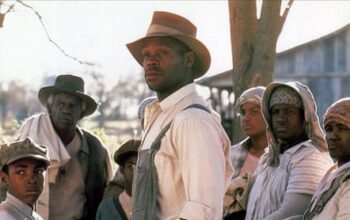S
In keeping with the essence of Alexandre Dumas, the latter half of the recently released two-part film adaptation of The Three Musketeers comes with not one, but two unresolved cliffhangers. The first is the unknown fate of D’Artagnan’s love interest, who was captured by Milady’s henchmen following the failed assassination of Louis XIII. The second cliffhanger revolves around the financial success of this potential European blockbuster.
The films were produced by France, Germany, Spain, and Belgium with a budget of €72 million for both parts. This placed them among the top 10 most expensive French productions ever and gave them the ability to compete with Hollywood. Notable actors such as Eva Green and Vincent Cassel were cast, and the story was modernized with a bisexual Porthos. However, the films have faced challenges, as the first part performed poorly in the UK and Germany in April. Surprisingly, the film did manage to earn a respectable €23 million in its home country of France.
Perhaps it was the aftermath of the pandemic, but this is another unfortunate event in the ongoing story of European blockbusters. The most recent major European film to try and appeal to international audiences was likely Luc Besson’s 2017 science fiction film Valerian and the City of a Thousand Planets, which had a difficult time turning a profit with its $200 million budget. Without a unified domestic market and a common language like Hollywood has, these types of projects are inherently risky.

EuropaCorp, run by Besson, was the primary European studio that focused on commercially successful films like Taxi and Taken. However, Valerian caused major financial struggles for the studio and it is now struggling with significant debt. While there have been some successful smaller films that have achieved global recognition, such as Amélie, Life Is Beautiful, and The Lives of Others, there are also local hits and franchises that may gain some international success, such as Intouchables in 2011 or the Astérix films. Starting in 2000, Hollywood has been expanding into this market by financing hits like The Orphanage in Spain in 2007 or The Artist in France in 2011. However, a true pan-European blockbuster that appeals to all audiences is as rare as a compliment about Brussels from Viktor Orbán.
According to Jean-Jacques Annaud, the lack of infrastructure and expertise for producing large-scale European films has resulted in a lack of ambition. Due to this, the French director had to seek funding from Paramount in the US in order to make his 2001 blockbuster, Enemy at the Gates, which was filmed by a European crew and set during the Battle of Stalingrad. Annaud reflects on the decline of individuals with the knowledge and ability to create major films in Europe, as well as a decrease in interest in making them. He also notes that there is now a fragmentation of audiences, leading to a shortage of European stars with international or pan-European recognition, such as Jean-Paul Belmondo and Alain Delon.
The recent European film awards were mainly won by independent films created by individual national film industries, or smaller joint efforts. Examples include Justine Triet’s French film Anatomy of a Fall and Jonathan Glazer’s The Zone of Interest, a collaboration between the UK, Poland, and the US. Mike Downey, the producer and chairman of the European Film Academy, mentions that there are still successful “European” films that have origins in Europe but are funded by Hollywood, such as the Harry Potter series.
Downey states that the outdated concept of the Europudding, which refers to the European versions of Eurovision that were featured on major screens in the 1980s and 1990s, is no longer relevant. These large-scale productions that spanned multiple countries were often looked down upon and compared to cheap wines, with a potential warning label stating “Product of more than one country.” Downey himself has contributed to this genre, citing his film Bathory: Countess of Blood (2008) as an example, which starred Anna Friel as a Hungarian serial killer from the 16th century.

One possible version of cinema history suggests that if the first world war had not occurred, the French film industry would have remained the dominant force and Hollywood would not have been able to catch up. However, due to the war, the film styles in the two industries diverged, with Hollywood focusing on action and visuals to cater to a growing immigrant audience, while France continued to produce more sophisticated films.
Bypass the advertisement for the newsletter.
after newsletter promotion
This marked the beginning of the division between mainstream and arthouse cinema. As time passed, European film industries, unable to compete with Hollywood, turned towards producing socially conscious films. In countries like France, these films were often funded by the government, leading to a culture of settling for mediocrity, according to Annaud. He believes that European filmmakers are encouraged to focus on meeting certain criteria, such as using native languages, rather than pushing for more ambitious projects that could reach wider audiences. Annaud himself experienced this mentality when he was asked to speak at a film school in Paris and found his poster defaced with graffiti stating “Annaud = success = danger.”
It is hopeful that we have moved away from reactionary distrust, but the overall landscape of European cinema suggests otherwise. Downey disagrees with the pursuit of blockbuster success and believes that Europe’s distinct national cinema is already producing high-quality work. The challenge lies in getting audiences to actually watch these films, especially after the pandemic. Downey suggests that a crucial contribution to European cinema is expanding beyond specialized art houses and into mainstream theaters, alongside more commercial films. This type of collaboration can only benefit European filmmakers. Today, cinema plays a significant role in shaping cultural identities that are inclusive, diverse, and reflective of the “new Europe.”
The European film awards will be shifting their date from early December to mid-January in 2026, in order to align with the busy awards season and increase their visibility. The concept of unity and support among filmmakers is still prevalent.
Source: theguardian.com


